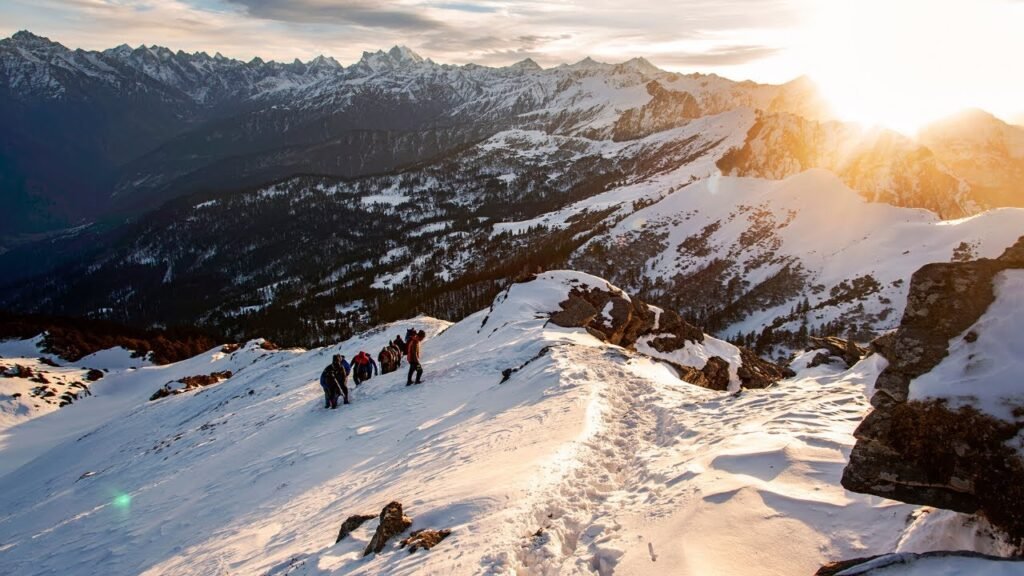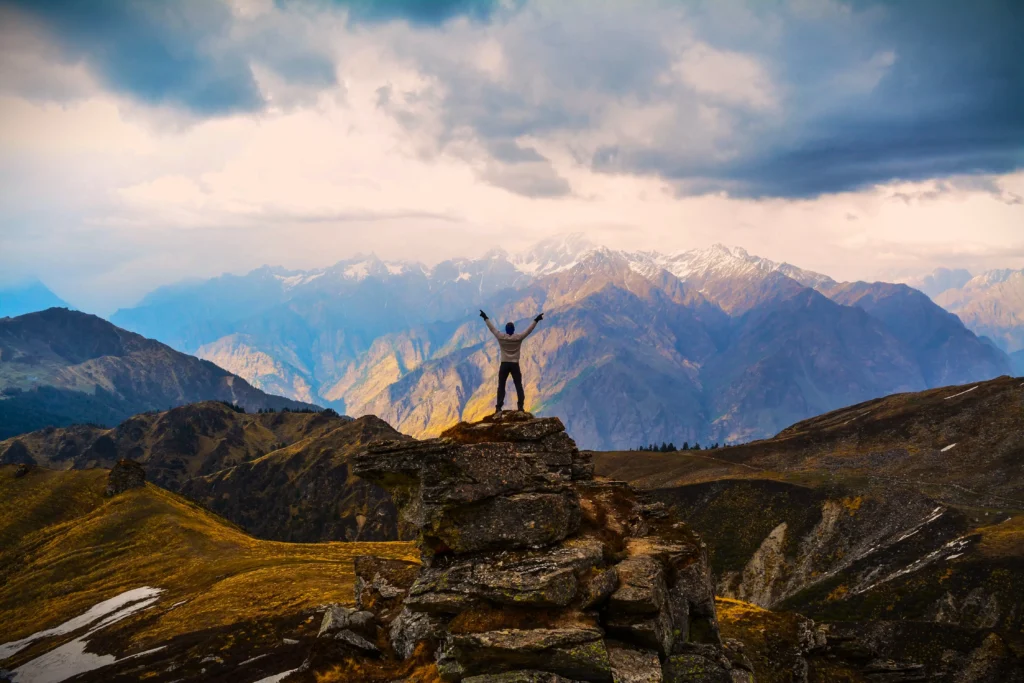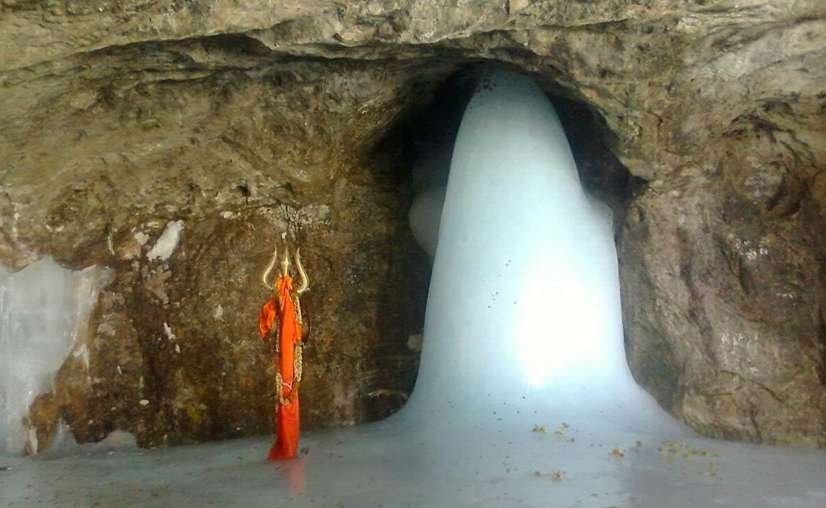
Introduction: Where the Sky Kisses the World’s Giants
Have you ever had a photograph in your mind—a mental image so vivid it feels like a memory you haven’t lived yet? Mine was of a mountain range. Not just any mountains, but the colossal, almost mythical wall of the Eastern Himalayas, bathed in the first, fire-gold light of dawn. I knew I needed to stand somewhere that would make me feel small, but profoundly alive. A place where the sheer, awesome power of nature could reset my internal clock.
If that deep, almost primal yearning resonates with you, then you’re ready for the journey I took. You’re ready for the Sandakphu Trek.
Let me be clear:
This isn’t a weekend stroll. This is a deliberate, seven-day pilgrimage to the “Throne of the Giants,” a winding path along the ancient Singalila Ridge that separates India and Nepal. It’s a journey that takes you through forests so misty they feel lifted from an ancient Irish myth, and up to an elevation of 11,930 feet (3,636 meters). The summit view is legendary, a vista so breathtaking it defies belief: not one, but four of the five highest peaks on the entire planet. You stand there, humbled, gazing at the monumental, “Sleeping Buddha” formation of Mount Kanchenjunga (the third highest), and then you see them—distant, yet undeniably present—Mount Everest, Lhotse, and Makalu.
The Forest Primeval:
One minute, I was trudging along a relatively open, sun-dappled path flanked by towering oaks, feeling the familiar burn in my calves. The next, I was swallowed whole by a mist-shrouded dreamscape. The air immediately grew cooler and damper, the ground softened with layers of moss, and suddenly, I was walking through a tunnel of the colossal rhododendron and magnolia trees.
I had read about the spring bloom, but nothing prepared me for the reality. This wasn’t just some colour; it was an absolute riot. Depending on the patch of forest, the trees exploded into flowers of fiery crimson, deep magenta, vibrant pink, and pristine white. It’s an experience that few other high-altitude treks in the world can genuinely match. This forest, with its ancient, gnarled trees, truly felt like the pulse of the earth.
A Photographer’s Paradise: Chasing the Molten Gold
For anyone with a camera—even if that camera is just the phone in your pocket—Sandakphu is a goldmine.
The sunrise light on the Kanchenjunga massifs is an experience that cannot be described adequately, only lived. We’d wake up an hour before dawn, shivering in the cold, and wait. When the sun finally broke the horizon, the snow-caps didn’t just get illuminated; they transformed. They went from cold, steel-blue shadows to a warm, soft lavender, then briefly flashed through crimson, before settling into a blinding, magnificent molten gold. It’s a moment that will seize your memory card and, more importantly, your soul.
A Journey Through Two Worlds: The Cultural Corridor
You’ll walk right through charming, slow-moving villages like Tumling and Gairibas, where life seems to tick at a pace the modern world has forgotten. The genuine warmth and incredible hospitality of the people—the Sherpas, Lepchas, and Nepalese hill tribes—are as inspiring as the mountains themselves. Their resilience, their gentle spirit, and their ability to live in such close, harmonious proximity with these colossal mountains is a lesson in humility.
It becomes deeply personal. You’ll share stories with Pemba, the guide, or the teahouse owner, maybe even a few fellow trekkers from around the globe. You’ll wake up not to the blast of a city alarm, but to the distant sound of a rooster and the incredibly crisp, clean mountain air. This Darjeeling Trek experience is the ultimate, necessary escape, allowing you to reconnect not just with nature, but with a culture rooted in the ancient ways of the earth.
Timing Your Ascent: The Best Time for the Sandakphu Trek
Choosing the right time to undertake the trek is perhaps the single most crucial piece of advice I can give you. The Sandakphu trail is a chameleon, transforming dramatically with the seasons. You want to align your trip with the magic you seek.
The Golden Seasons: Clear Skies and Colourful Trails
Spring (The Rhododendron Season): This magic unfolds in March, April, and May. This is when you’ll find the Maximum Flora, as the famous rhododendron and magnolia burst into colour. Day temperatures are comfortable, sitting between 15’C to 20’C, though nights can drop to 5’C to 10’C. My personal take: If you dream in colour, this is your window. The air is soft, the forest is alive, and the experience is intoxicating.
Autumn (The Clear Sky Season): This runs through September, October, and November. This time offers the absolute Best Views, with crystal clear skies providing the most vivid and uninterrupted panorama of all four highest peaks. Day temperatures are cooler, 10’C to 15’C, and nights can be very chilly, dropping to 0’C to 5’C. My personal take: If your goal is the definitive, breathtaking, crystal-clear view of Everest and Kanchenjunga, this is non-negotiable.
When to Avoid (or When to Prepare Differently)
The monsoon months of June, July, and August bring heavy, unrelenting rainfall, making the trails difficult and obscuring the mountain views. The deep winter months of December, January, and February are extremely cold, often with heavy snow blocking the trail; a winter trek requires serious experience and specialized gear.
For the ideal blend of manageable temperatures, vibrant trails, and incredible views, we at The Mountain Trekker almost always recommend the bookend seasons: October-November and April-May.
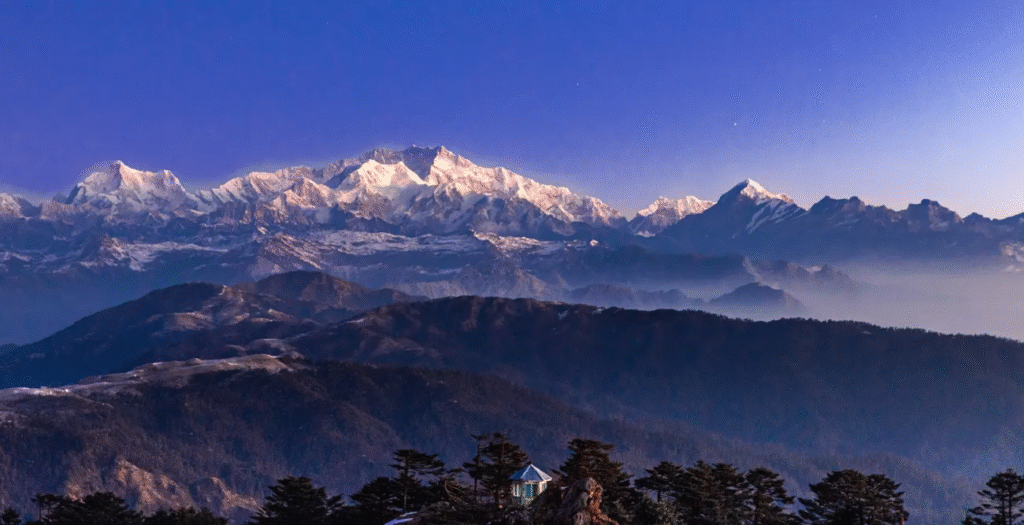
The Journey Detailed: My Day-by-Day Sandakphu Itinerary
Day 1: The Gathering and The Quiet Start
My journey truly began the moment I stepped off the plane at Bagdogra (IXB). We drove for about 4-5 hours up to the small border town of Manebhanjan (approx. 7,000 ft / 2,134 m) or the nearby village of Chitrey.
Day 2: The Ascent Begins – Manebhanjan to Tumling/Tonglu
The real climb started here, a steady, demanding uphill path of approx. 13 km taking 6–7 hours. The trail quickly passes the Singalila National Park gate, and we pushed up through the thick forests, finally reaching the ridge-top beauty of Tonglu or Tumling (approx. 9,600 ft / 2,926 m). Tonglu is where I got that first, spectacular teaser view of the Kanchenjunga range.
Day 3: Traversing the Ridge – Tumling/Tonglu to Kalipokhri
This was one of the most beautiful days of walking, covering approx. 13 km in 5–6 hours. The walk was noticeably less demanding, following the Indo-Nepal border through rolling, open hills and charming small settlements like Gairibas and Kaiyakata. We ended the day at Kalipokhri (approx. 10,400 ft / 3,170 m), named for its sacred black pond.
Day 4: Summit Day – Kalipokhri to Sandakphu!
This was the day—a final, focused push of approx. 6 km taking 3–4 hours. The climb is steady and consistent, but the anticipation fuels you. Reaching the summit of Sandakphu (approx. 11,930 ft / 3,636 m) was an emotional release. We stayed at the highest available lodge, ready for the morning’s spectacle.
Day 5: The Sunrise Spectacle and The Descent Begins
We woke up before dawn for the legendary light show. The cold, the wait, and then the molten gold sunrise on Kanchenjunga, with the colossal silhouettes of Everest, Lhotse, and Makalu in the background. After breakfast, we began the descent.
Standard Descent:
Day 6: The Homeward Trail – Phalut/Gurdum to Rimbik
The final day of trekking is a long, winding descent. From Phalut, it’s approx. 18 km (6–7 hours), or from Gurdum, it’s approx. 12 km (6–7 hours). The trail winds through spectacular forests, passing beautiful villages like Gorkhey, and finally leading to Rimbik (approx. 7,400 ft / 2,256 m) for a comfortable overnight stay to celebrate a successful summit.
Day 7: Farewell to the Mountains – Rimbik to Siliguri/Bagdogra
After a leisurely breakfast, we took a final scenic drive (approx. 5-6 hours) back to Siliguri/NJP/Bagdogra, carrying home the deep, quiet, satisfying ache of a journey truly earned.
Sandakphu to Gurdum (Approx. 10 km / 4–5 hours). A quicker, scenic descent into the dense pine and bamboo forests.
Flora, Fauna, and Unique Experiences: Beyond the Peaks
The Sandakphu-Phalut region is an ecological treasure trove, a protected pocket of biodiversity. Trekking here is a constant discovery.
You’re more likely to encounter the region’s incredible Himalayan Birds (like the Satyr Tragopan) and see the majestic, shaggy Yaks grazing peacefully at the higher altitudes—a classic symbol of high-altitude life.
The entire path is peppered with small monasteries and countless, brightly coloured prayer flags, offering a beautiful spiritual dimension to the adventure. You are walking a trail that has been used for centuries, connecting trade routes and cultures.
Preparation and Practicalities: Your Sandakphu Trekking Toolkit
A truly memorable trek relies on being perfectly prepared.
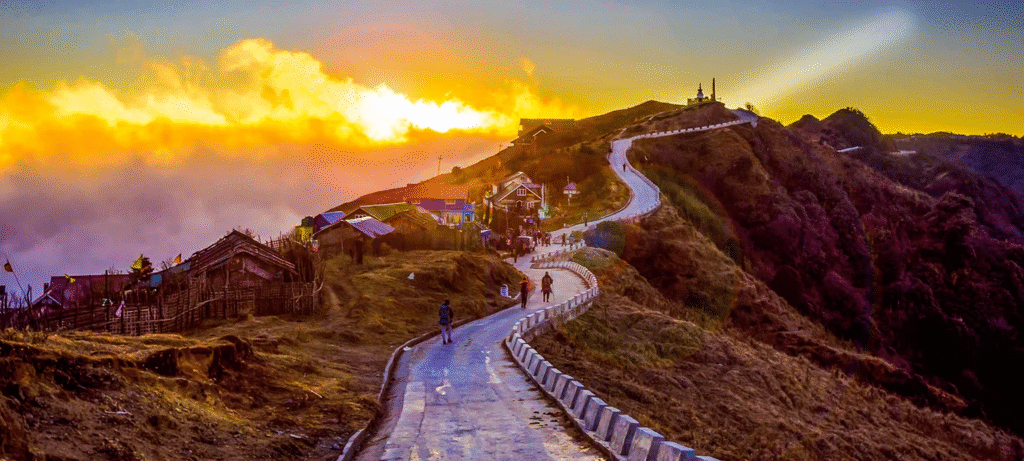
Essential Packing List & Why
Clothing: You absolutely need a 3-Layer System (Thermals, Fleece, Waterproof Shell). Temperatures fluctuate dramatically; layers are your survival strategy for managing body heat. Don’t forget waterproof gloves and a woollen cap.
Footwear: Waterproof, Ankle-Supportive Trekking Boots (must be well broken-in!) are non-negotiable, along with 4–5 pairs of thick wool or synthetic socks. New boots will cause blisters and ruin your trip.
Gear: A 40-50L Backpack, a headlamp (with extra batteries), and good UV-Protect Sunglasses are vital. Use Sunscreen (SPF 40+) and lip balm with SPF; the sun at altitude is intense.
The Mountain Trekker’s Essential Trekking Tips
Hydrate Religiously: Drink 3–4 litres of water minimum per day. Your acclimatization depends on it.
Go Slow and Steady: Find a comfortable, slow pace and maintain it. This conserves energy and aids acclimatization.
Layering: Adjust your layers immediately if you start feeling too hot or too cold. .
Authentic, Local-Led Experience (The Insider’s View)
This was the real differentiator. This means:
Deeper Knowledge: We received rich, local insights into the flora, the folklore, and the culture that a tourist-only company could never provide.
Best Logistics: Their long-standing relationships with teahouse owners ensured we received the warmest welcome and the best available accommodation.
Sustainable Travel: They follow and promote “Leave No Trace” principles, actively supporting the local economy.
We are experienced, we are local, and we are passionate. We don’t want you to merely see the mountains; we want you to feel them.

Conclusion and Your Call to Adventure
The Sandakphu Trek is more than a trail; it is your opportunity to stand in the presence of giants—Everest, Kanchenjunga, Lhotse, and Makalu—and feel the quiet, awesome power of the world’s highest peaks. It’s an adventure that promises panoramic views and unforgettable cultural immersion, all while challenging you just enough to discover exactly what you’re truly capable of.
This is your rite of passage. This is the memory of a lifetime waiting to be made.
Don’t let the thought of planning or logistics hold you back. The Mountain Trekker is here to transform your Himalayan dream into a perfectly planned, beautifully executed reality. We provide the expertise, the safety, and the authentic local connection you need to fully embrace the magic of the Sandakphu Trekking experience.
Are you ready to claim your view from the Throne of the Giants, just like I did?
Book your Sandakphu Trek with The Mountain Trekker today! Your mountain is calling.
If you like reading about this trek you might also like Gaumukh Tapovan Trek, and if you like to join us in our journey of trekking then Contact Us.


